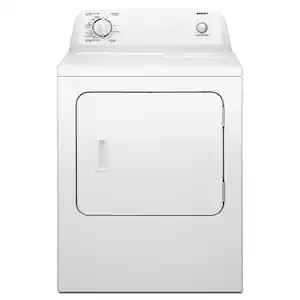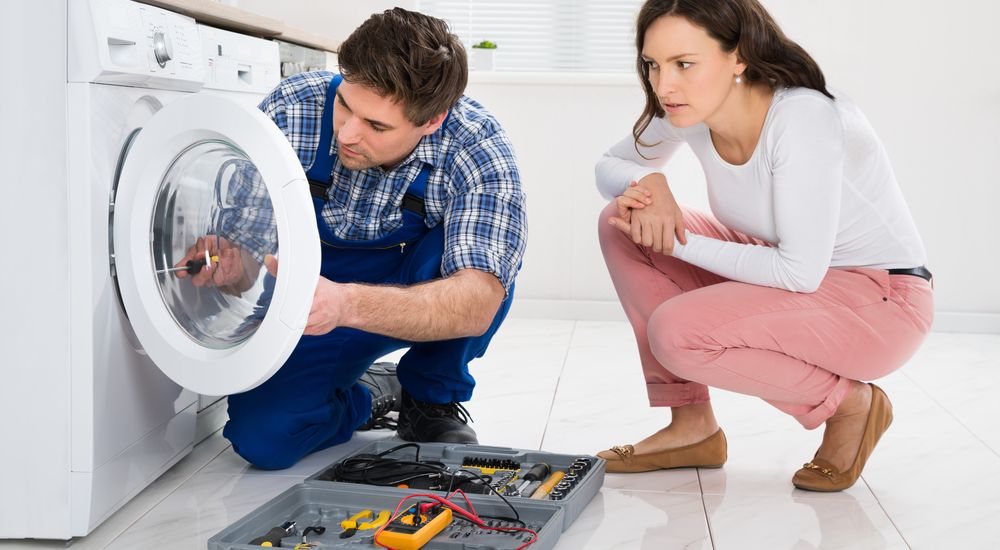Working time:
Monday to Saturday: 8:00 A.M. – 7:00 P.M.
Sunday: 9:00 A.M. - 4:00 P.M.
Working time:
Monday to Saturday: 8:00 A.M. – 7:00 P.M.
Sunday: 9:00 A.M. - 4:00 P.M.
Client Services:
Client Services:
Speed Queen Dryer Repair
Speed Queen dryers are well-regarded for their durability and powerful performance, offering reliable service for years. However, like any appliance, they can experience issues such as overheating, extended drying times, or operational noises. These problems may be caused by simple maintenance oversights or worn-out components. The following guide will help you troubleshoot common problems, pinpoint their causes, and provide effective solutions to keep your Speed Queen dryer in top working condition.

Common Problem
Speed Queen dryers are known for their longevity, but over time, they can encounter issues such as insufficient heat, unusual noises, or even failure to start. These issues are typically caused by faulty parts like the heating element, thermal fuse, or worn drum rollers. Clogged vents and filters can also contribute to extended drying times or overheating.
If your dryer isn’t heating properly, the heating element, thermal fuse, or thermostat could be malfunctioning. If the drying cycle takes too long, check for airflow blockages in the vent system or a damaged blower wheel. Noises like squeaking, grinding, or thumping may indicate worn rollers, a faulty drive belt, or debris caught in the drum. If the dryer won’t start, a faulty door switch, start switch, or control board might be to blame.
Speed Queen Clothes Dryers Troubleshooting
If dryer is not heating check the heating element for any signs of damage or wear. If it appears faulty, replace it. Inspect the thermal fuse for continuity with a multimeter, as a blown fuse can prevent heating. Test the thermostat to ensure it’s operating correctly, and replace it if necessary.
If your dryer is taking too long to dry clothes, start by cleaning the lint filter and vent hose. Ensure the external vent is clear of debris. If airflow is still restricted, inspect the blower wheel for damage or clogs. A malfunctioning blower wheel can reduce airflow and result in longer drying times.
Unusual noises can often be traced to worn drum support rollers, a damaged drive belt, or debris in the drum. Inspect the drum rollers and bearings for signs of wear. Check the drive belt for damage and replace it if necessary. Make sure there are no foreign objects in the drum that could be causing the noise.
If your Speed Queen dryer won’t start, check the power supply and ensure it’s plugged in properly. Inspect the door switch to make sure it’s engaging when the door is closed. Test the start switch for continuity, and check the control board for any faults. Replacing a faulty door switch or start switch should restore functionality.
If your dryer is overheating, inspect the vent system for clogs or blockages. Clean the lint filter and vent hose thoroughly. Check the cycling thermostat to make sure it’s regulating the temperature correctly. If the thermostat is faulty, replace it.
Top 6 Problems and Solutions for your Speed Queen dryer
Unusual Noise During Operation
1. Inspect the drum rollers for wear
2. Check the drive belt for damage
3. Look for foreign objects in the drum
4. Test the motor for any faults
5. Replace any worn or damaged parts
Long Drying Times
1. Clean the lint trap and vent hose
2. Inspect the external vent for blockages
3. Check the blower wheel for clogs
4. Ensure the drum is not overloaded
5. Replace any damaged blower components
Dryer Not Heating
1. Inspect the heating element for visible damage
2. Test the thermal fuse for continuity
3. Check the thermostat for proper operation
4. Ensure the power supply is working correctly
5. Replace any faulty components as needed
Dryer Not Starting
1. Verify the power supply is stable
2. Test the door switch for proper engagement
3. Check the start switch for continuity
4. Inspect the control board for faults
5. Replace any malfunctioning components
Dryer Overheating
1. Clean the lint filter and vent system
2. Inspect the cycling thermostat for accuracy
3. Check the heating element for damage
4. Ensure there are no blockages in the vent hose
5. Replace any faulty parts
Dryer Drum Not Turning
1. Ensure the dryer is not overloaded
2. Check the drive belt for damage
3. Inspect the drum support rollers
4. Test the motor for signs of failure
5. Replace any broken components
Additional Speed Queen Dryer Troubleshooting Techniques
For continued optimal performance, regularly clean the lint filter and inspect the vent system for blockages. Restricted airflow can lead to overheating and longer drying cycles.
If the dryer isn’t heating properly, ensure the thermal fuse, heating element, and thermostat are functioning as they should. A multimeter can help identify faulty parts that need replacement.
If your dryer is making unusual noises, check the drum support rollers, drive belt, and motor. Any worn-out components should be replaced promptly to prevent further damage.

Schedule an Appointment Online
Contact us:
Phone Number
+1 (855) 879-9929
info@washer-dryer-repair-service.com
Working Hours
Mon – Sat: 8AM – 7PM
Sun: 9AM – 4PM
